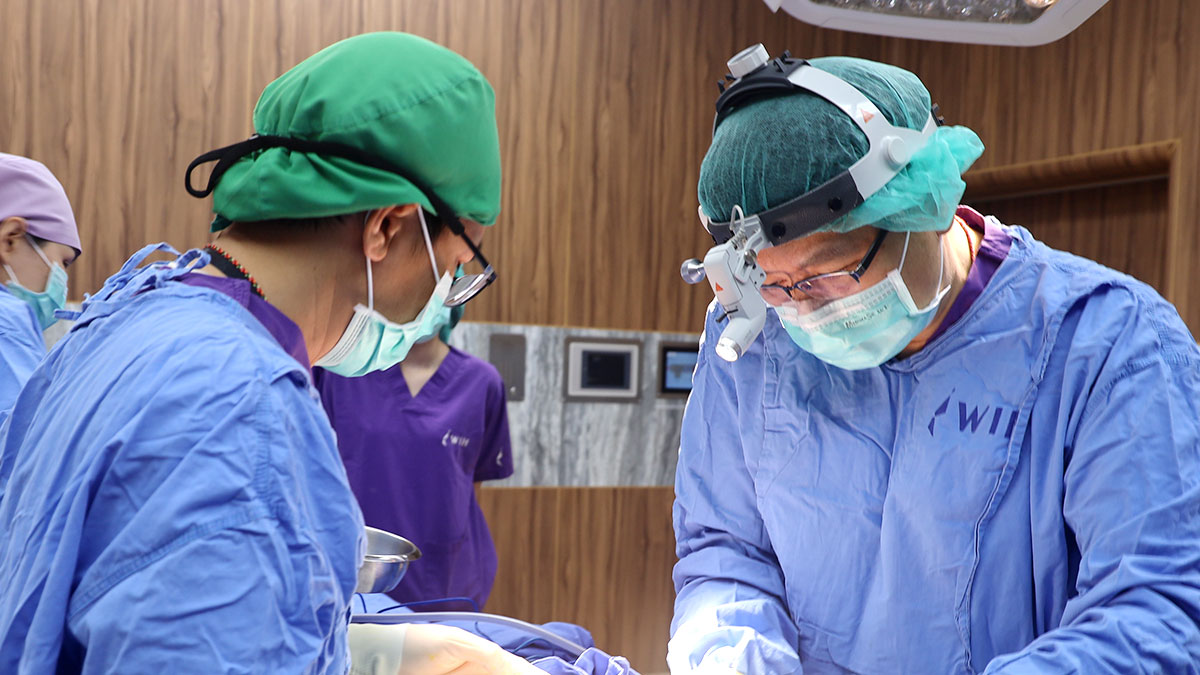
Orchidectomy Surgery :
What to Expect and Why It’s Performed
In the realm of men’s health, certain medical terms can sound daunting. “Orchidectomy” is one such term that may raise questions and concerns. However, understanding this procedure, its purpose, and what it entails can empower patients and their families to make informed decisions about their health. This article, brought to you by the experts at WIH Hospital, will provide a clear and comprehensive overview of orchidectomy in a formal, yet easy-to-understand manner.
What is an Orchidectomy?
An orchidectomy, also known as an orchiectomy, is a surgical procedure to remove one or both testicles (testes). The testicles are the male reproductive glands responsible for producing sperm and the primary male hormone, testosterone. This procedure is a significant step in treating various medical conditions, most notably testicular cancer and advanced prostate cancer.
Why is an Orchidectomy Recommended?
A surgeon may recommend an orchidectomy for several important reasons:
- Testicular Cancer: This is the most common reason for a radical inguinal orchidectomy. Removing the cancerous testicle is a crucial first step in treatment and helps to accurately stage the cancer.
- Prostate Cancer: In cases of advanced prostate cancer, the growth of cancer cells is often fueled by testosterone. A bilateral orchidectomy (removal of both testicles) significantly reduces testosterone levels in the body, thereby slowing down the progression of the disease. This is a form of hormone therapy.
- Testicular Torsion: This is a medical emergency where the spermatic cord, which provides blood flow to the testicle, becomes twisted. If not corrected quickly, the testicle can be permanently damaged, necessitating its removal.
- Severe Testicular Injury: Significant trauma to the testicles that is beyond repair may require an orchidectomy.
- Management of Certain Breast Cancers in Men: Similar to prostate cancer, some male breast cancers are hormone-sensitive, and reducing testosterone can be a part of the treatment plan.
Understanding the Different Types of Orchidectomy
There are a few different approaches to this procedure, and the type performed depends on the underlying medical reason:
- Radical Inguinal Orchidectomy: This is the standard procedure for suspected testicular cancer. An incision is made in the groin, and the entire testicle and spermatic cord are removed. This approach helps prevent the potential spread of cancer cells.
- Simple Orchidectomy: In this procedure, the surgeon makes an incision directly on the scrotum to remove one or both testicles. This type is often performed for conditions other than testicular cancer, such as in the management of prostate cancer or for gender-affirming surgery.
- Subcapsular Orchidectomy: This procedure involves removing the glandular tissue within the testicles, leaving the outer testicular capsule intact. This can be an option for prostate cancer treatment, as it reduces testosterone production while maintaining a more natural appearance of the scrotum.
The Orchidectomy Procedure: What to Expect
Undergoing any surgery can be a source of anxiety. Knowing what to expect before, during, and after an orchidectomy can help alleviate some of these concerns.
Before the Procedure: Our expert surgical team at WIH Hospital will provide you with detailed pre-operative instructions. This may include dietary restrictions and a review of your current medications. You will have a thorough consultation with your surgeon and anesthesiologist to discuss the procedure and address any questions you may have. For patients concerned about fertility, discussions about sperm banking may be initiated.
During the Procedure: Orchidectomies are typically performed under general or spinal anesthesia, ensuring you are comfortable and pain-free. The surgeon will then perform the type of orchidectomy best suited for your condition. The procedure itself is relatively quick.
After the Procedure: Following the surgery, you will be monitored in a recovery area. Pain medication will be provided to manage any discomfort. Most patients can go home the same day or after a short hospital stay.
.
Recovery and Life After an Orchidectomy
Recovery from an orchidectomy is usually straightforward. You can expect some swelling and bruising in the groin or scrotum, which will subside over a few weeks. It is important to follow your surgeon’s post-operative instructions, which will include:
- Resting and avoiding strenuous activity for a period.
- Keeping the incision site clean and dry.
- Taking prescribed pain medication as needed.
For many men, life after an orchidectomy is full and active. If one testicle is removed, the remaining testicle will typically produce enough testosterone and sperm for normal function. If both testicles are removed, testosterone replacement therapy will be necessary to manage symptoms like fatigue, low libido, and hot flashes. Your medical team will work closely with you to manage these changes.
For those who desire it, a testicular prosthesis can be placed during or after the orchidectomy to maintain the cosmetic appearance of the scrotum.
Considering Your Options at WIH Hospital
Deciding on an orchidectomy is a significant decision. The dedicated and experienced team of urologists and our board-certified surgeons at WIH Hospital is here to provide you with compassionate care and expert guidance. We utilize the latest surgical techniques to ensure the best possible outcomes for our patients.
If you or a loved one has been recommended for an orchidectomy or if you have concerns about your testicular health, we encourage you to schedule a consultation with one of our specialists. We are committed to providing you with the information and support you need to navigate your health journey with confidence.

